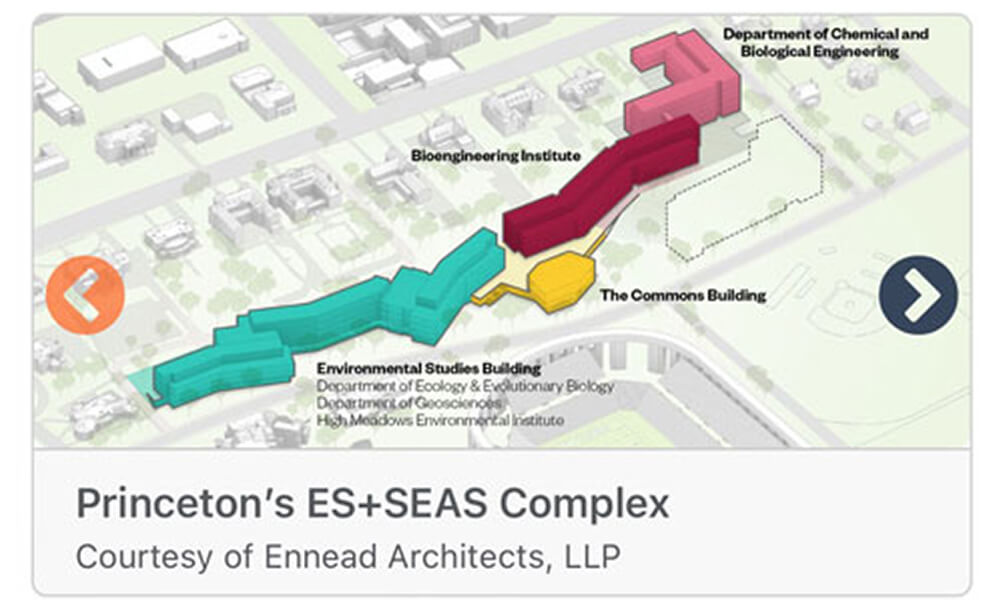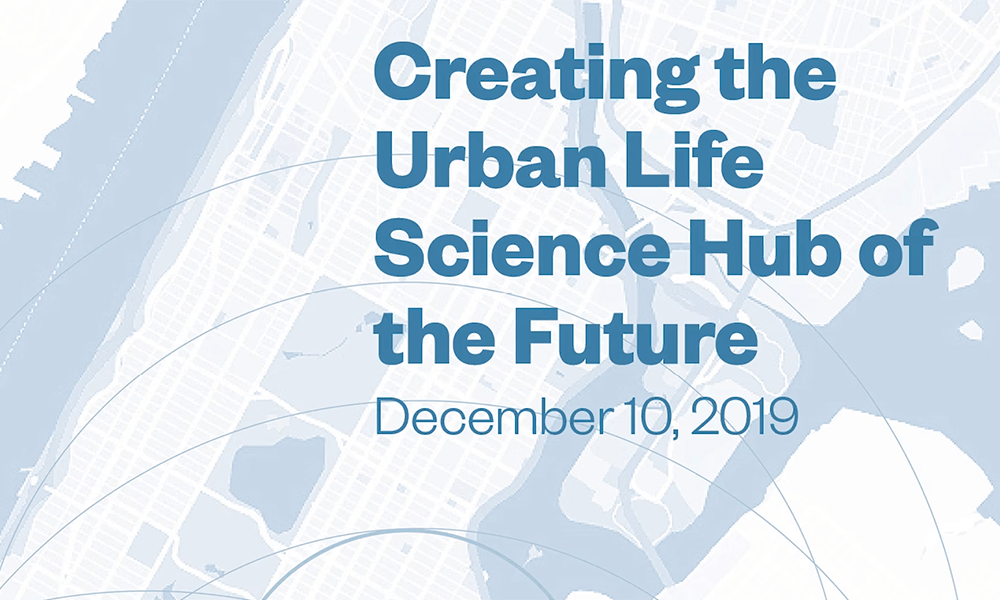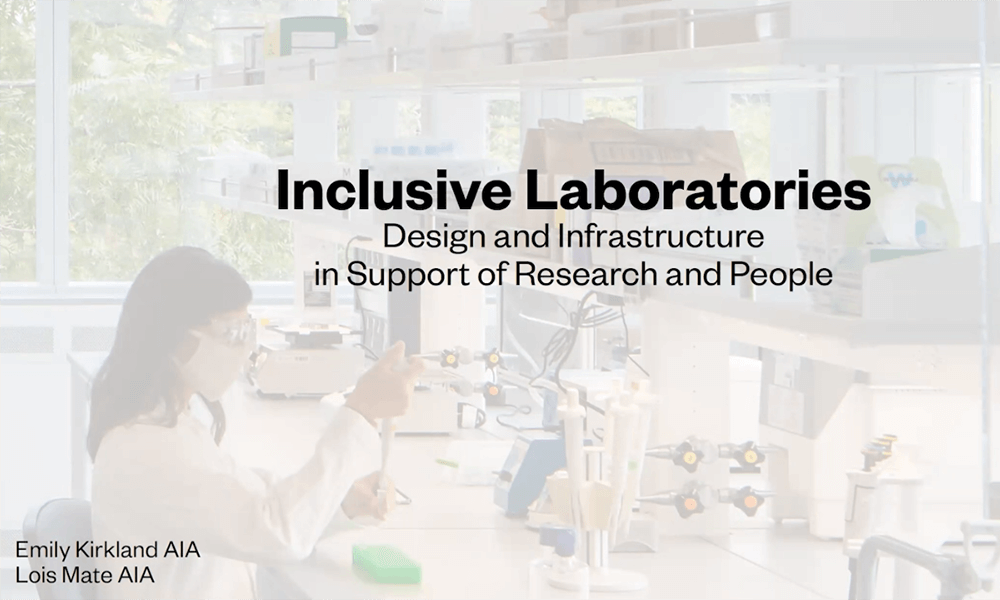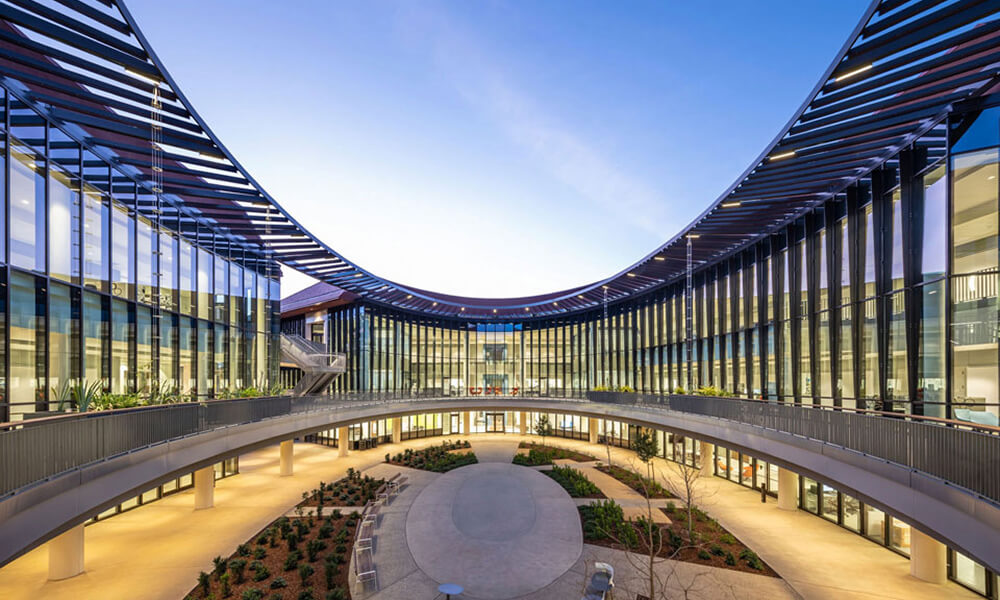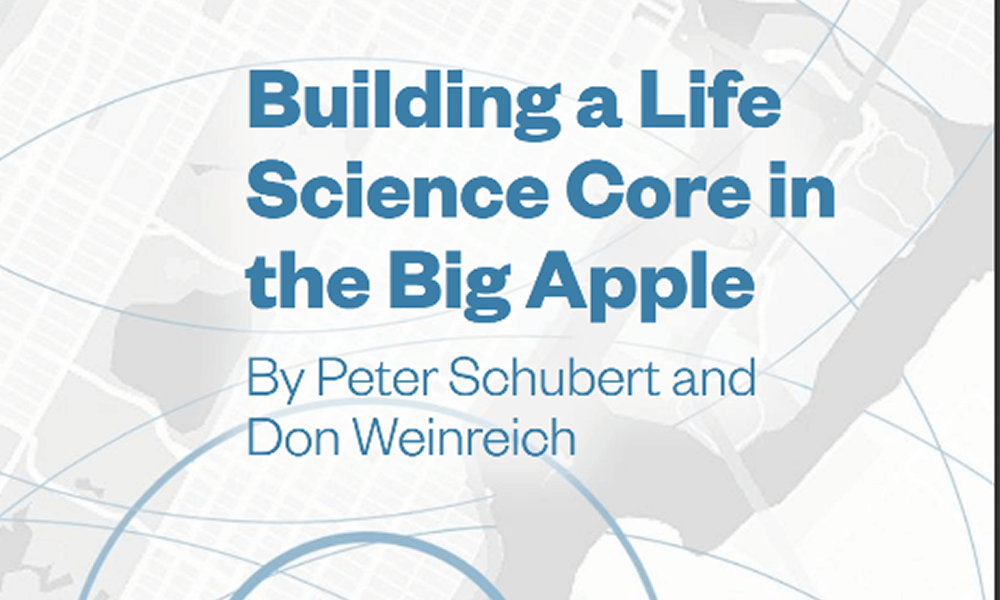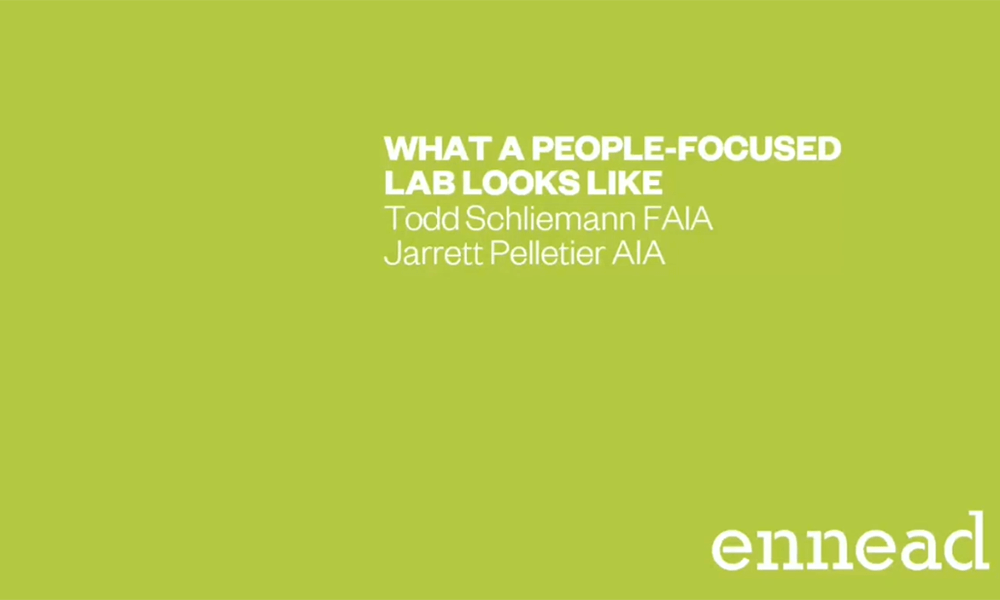We design innovative laboratories that accelerate the cycle of discovery.
Our research facilities provide academic institutions and commercial lab enterprises with the framework for cutting-edge research that moves ideas and technologies to the market at a faster rate.
Transforming Research Environments
We have a reputation for award-winning design excellence and experience with dynamic research facilities across the country and internationally. We have designed laboratories across a range of disciplines, from biomedical research to engineering and teaching labs, for both academic and commercial users. Projects range from purpose-built facilities to expansions within existing campus contexts. Our environmentally sustainable buildings reflect the progressive, optimistic spirit of our clients and enhance operational resilience.
Through our collaborative process, which engages all stakeholders and is mindful of the economic and functional pressures that bear on institutions, we challenge our clients to rethink how they engage with users and present their missions to the public.
Emerging Paradigms
Through our extensive experience, we have identified three emerging laboratory design paradigms:
The Startup Hub
These small-scaled, incubator facilities are highly flexible to support the evolving nature of new ideas. Shared facilities with specialized research cores reduce the barrier to entry that many young research groups and initiatives face.
The Wet Lab of the Future
The Wet Lab of the Future. New automation technologies and improvements in computer-generated models have altered the traditional wet-lab model. Reducing overall chemical use, increasing specialized core labs and high containment areas, and planning workspace for hybrid and cloud-based modalities supports new ways of collaborating.
A People-Focused Laboratory
A humanist approach to laboratory design brings scale to these often-sterile workspaces and improves the health and wellbeing of users. Elements such as ample daylight, air quality and natural materials, along with health and wellness amenities, create dynamic workplaces that help attract and retain top research talent.
Inherent in each design paradigm are three transforming architectural principles that provide the framework for successful research environments: Community, Growth and Wellbeing
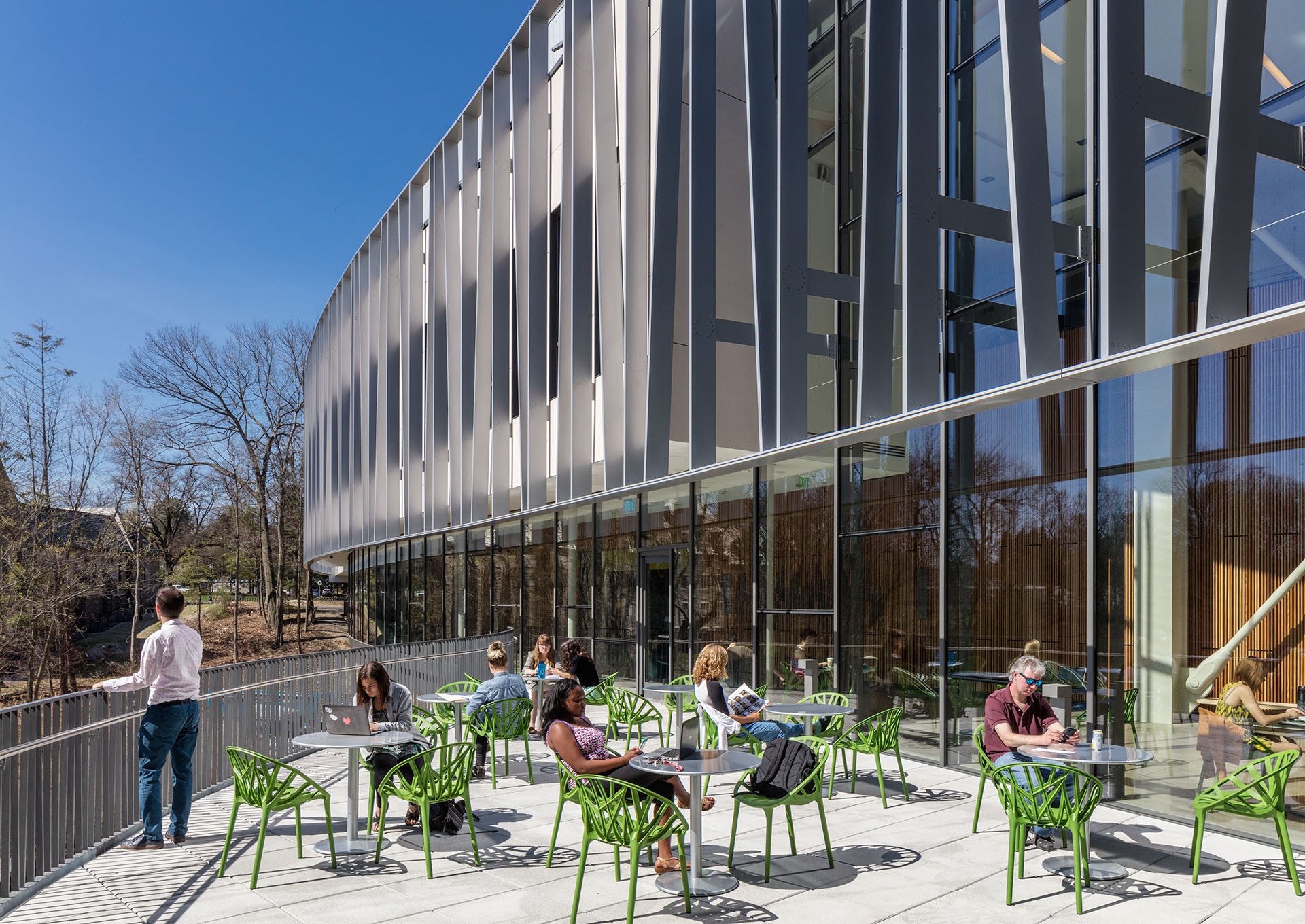
Vassar College, Integrated Science Commons
Community and Connectivity
Each research facility we design builds on past knowledge to advance the idea of what “state-of-the-art” in laboratories means. Design solutions are driven by context: an isolated research campus is different from an urban university; an entrepreneurial start-up is different from a corporate pharmaceutical company. By responding to the unique needs of each client, well-designed laboratories can help attract top talent and create new pathways for future generations.
Our laboratory designs promote connectivity between many disciplinary groups and foster strong scientific communities.
As research becomes increasingly multidisciplinary, facilities must include spaces not just for experimentation but also for socialization, collaboration, and contemplation. Integrating thoughtfully considered elements throughout the building—such as shared conference rooms, seminar halls, and even cafes—is increasingly important. Today’s research facilities, like all contemporary work places, must incorporate interstitial and amenity spaces to create a dynamic “live-work-play” environment where both formal and informal interactions thrive.

Vassar College, Integrated Science Commons
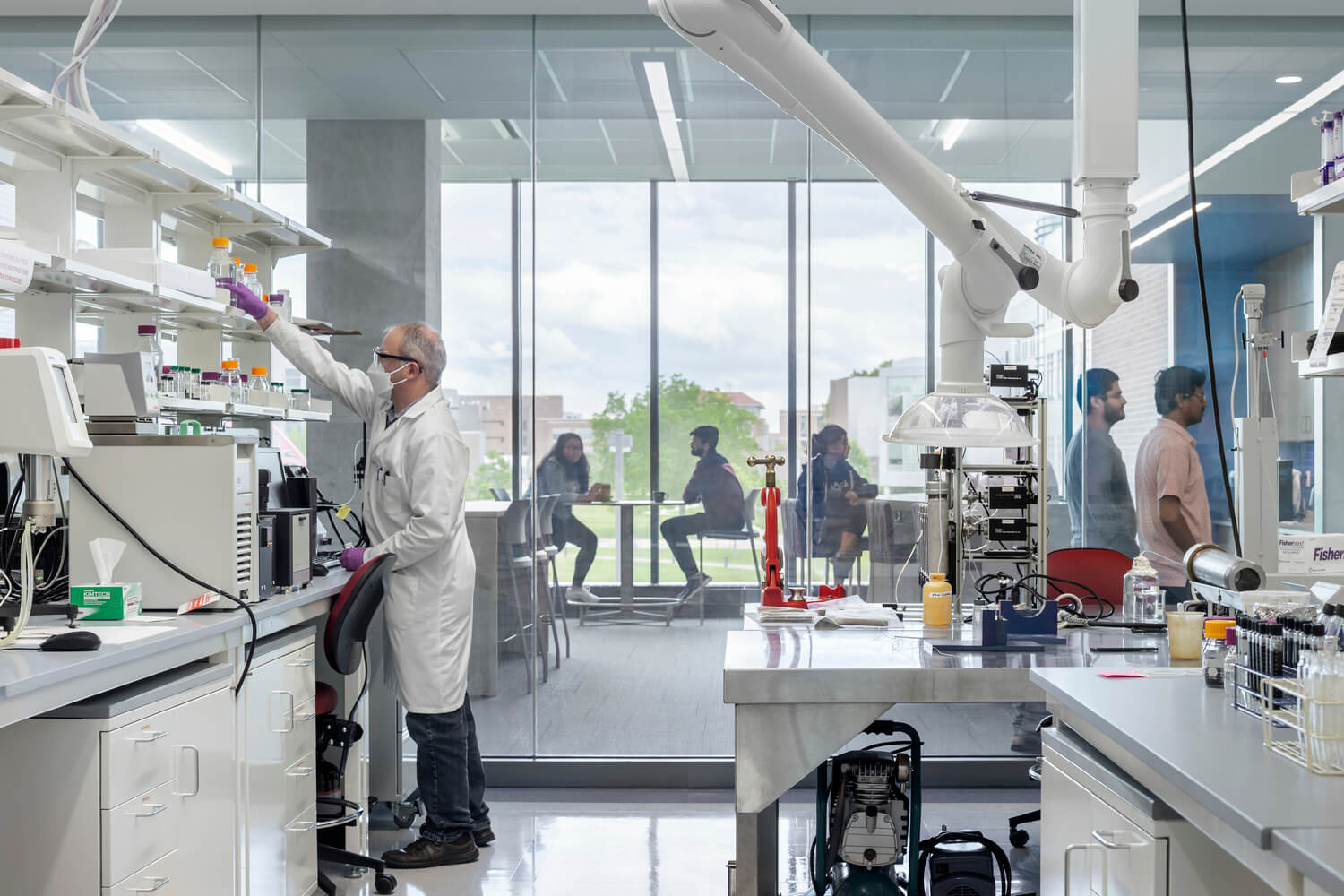
We developed a highly effective programming process for Purdue University’s Engineering Flex Lab. Following a comprehensive survey of nationally recognized engineering research labs, we designed an entirely modular lab ecosystem of bench and support space, with a few carefully curated specialty spaces, including high-bay and low-vibration labs. The adjacent offices and graduate workspaces were likewise designed to adapt to the changing sizes and needs of research teams.
Future-Friendly Design
Because of the rapidly changing nature of research today, flexibility is essential to lab design.
Our team brings experience designing responsive, future-friendly facilities across the globe from which we have developed a comprehensive approach to programming, planning, detailing, and commissioning adaptable, efficient labs.
Flexibility offers greater opportunities for experimentation and reconfiguration when new technologies emerge.
With the rapid advancement of equipment technology and research pursuits, it is essential to design with an eye towards future innovations. Flexibility comes at a price, and careful decisions must be made relative to budget requirements. However, investments in smart infrastructure, with mechanical, electrical, and plumbing systems laid out to facilitate future changes and well-considered repeating modules, all have enduring value. Flexible planning can accommodate future space and equipment requirements as lab group sizes and researchers’ needs evolve.
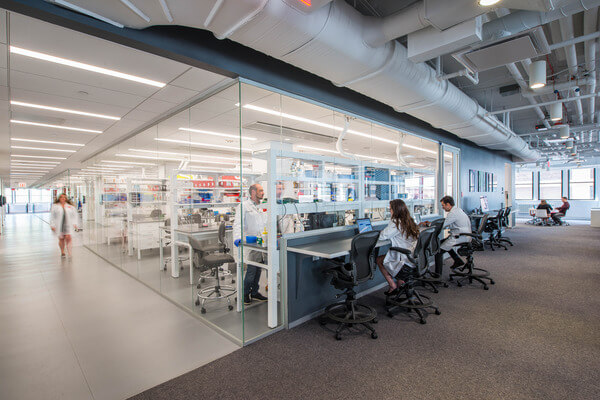
New York Stem Cell Foundation, Research Institute Laboratory
Sustainability and Wellbeing
Unique to our integrated design approach is an emphasis on optimizing the quality of the working environment and creating positive communities where investigation and invention can thrive.
As a building typology, laboratories are notorious for high energy consumption. While facilities must meet the needs of a flexible research agenda, they should also reduce their total carbon footprints. Reductions are achieved primarily through careful integration of “free energy” associated with heating, cooling, lighting, and even ventilation. Optimizing the design for reduced loads related to these human safety and comfort criteria helps to reduce the total energy demand.
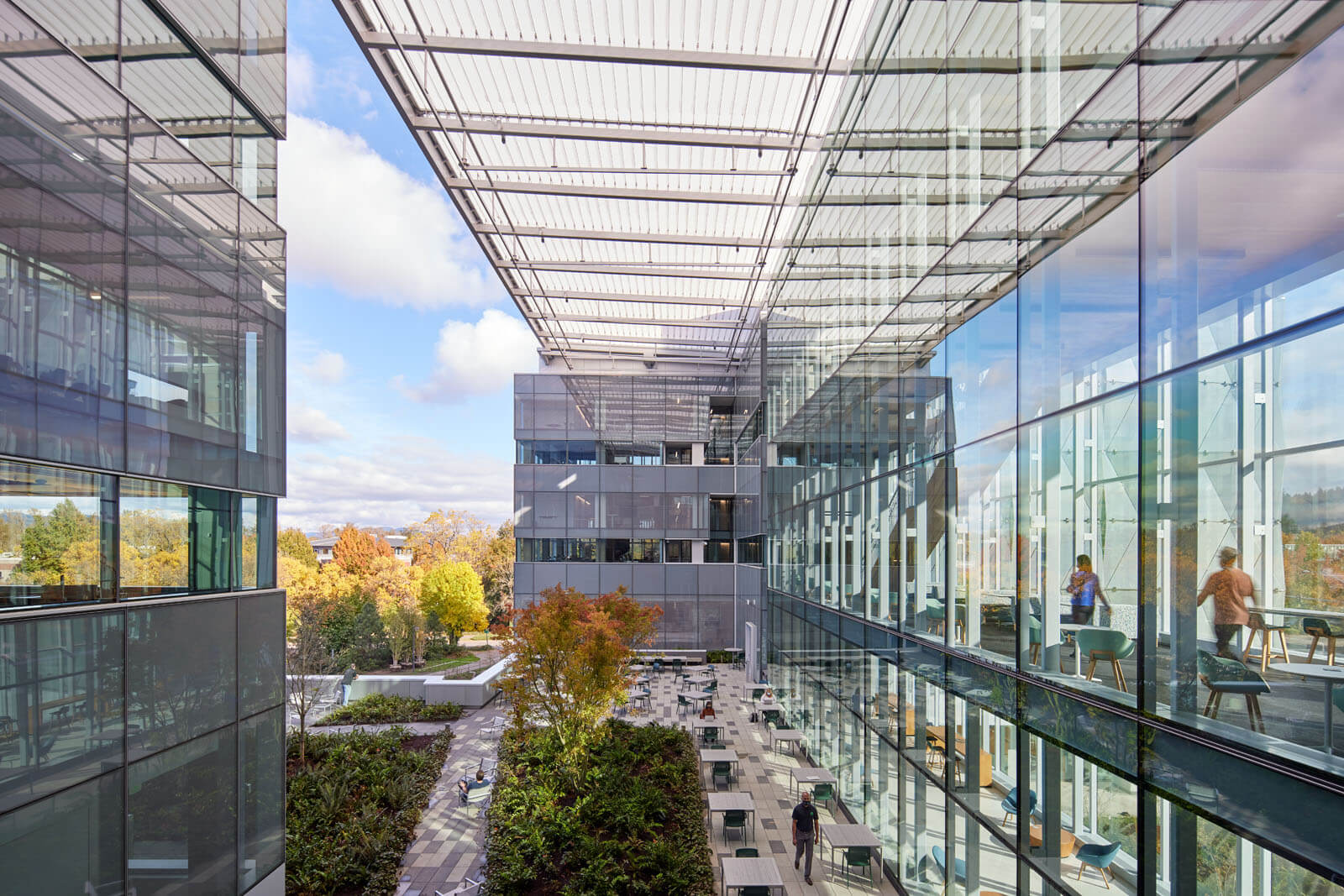
University of Oregon, Knight Campus for Accelerating Scientific Impact includes spaces for experimentation but for socialization, collaboration, and contemplation.
Our Laboratory Design
Since 2000, Ennead has completed major laboratories for private companies, institutions, and educational clients around the country and the world. These projects represent close to 6,000,000 square feet, and over $3,000,000,000 of investment from our development partners, many of whom are repeat clients. We are the national leader in vertical lab buildings–those above 12-stories–having completed more than any other firm.
Biomedical Research and Life Sciences
Our wet labs for institutional and academic life sciences create dynamic research environments that integrate emerging technologies and foster collaboration that turns research into tangible improvements in human health.
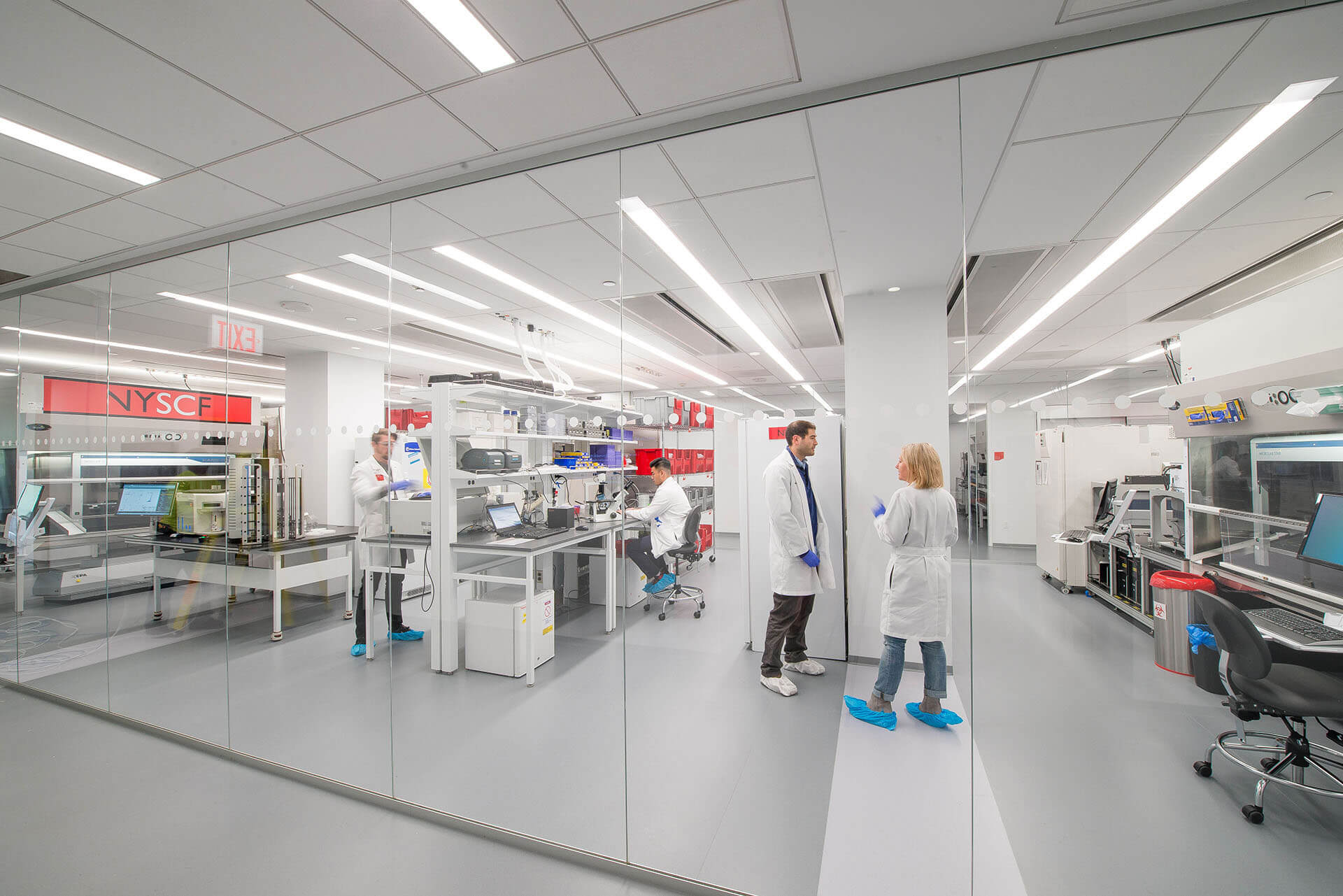
Selected Projects
Applied Life Sciences Hub
New York Blood Center
City University of New York, Hunter College
Science and Health Professions Building
Kuwait University
Health Sciences Campus
Memorial Sloan-Kettering
The David H. Koch Center for Cancer Care and Center
NYU Langone Health
Science Building and School of Medicine
Purdue University
Dudley and Lambertus Hall
Purdue University
Chaney-Hale Hall of Science
Stanford University Sarafan
ChEM-H and the Wu Tsai Neurosciences Institute
Engineering
Our Engineering Laboratories provide state-of-the-art research environments where multiple disciplines collaborate. Cutting-edge laboratories, along with carefully designed and scaled communal spaces, support innovation and discovery.
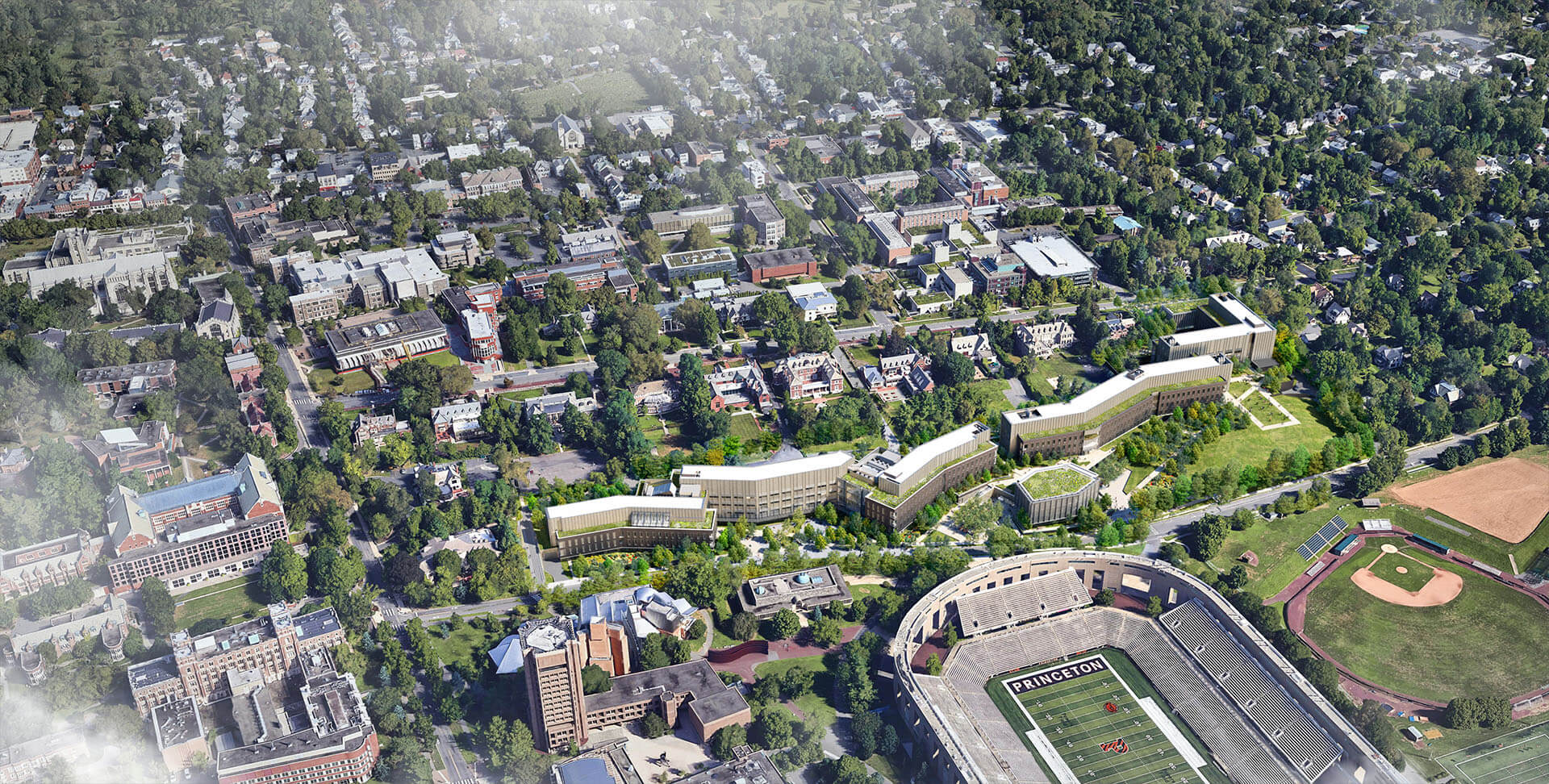
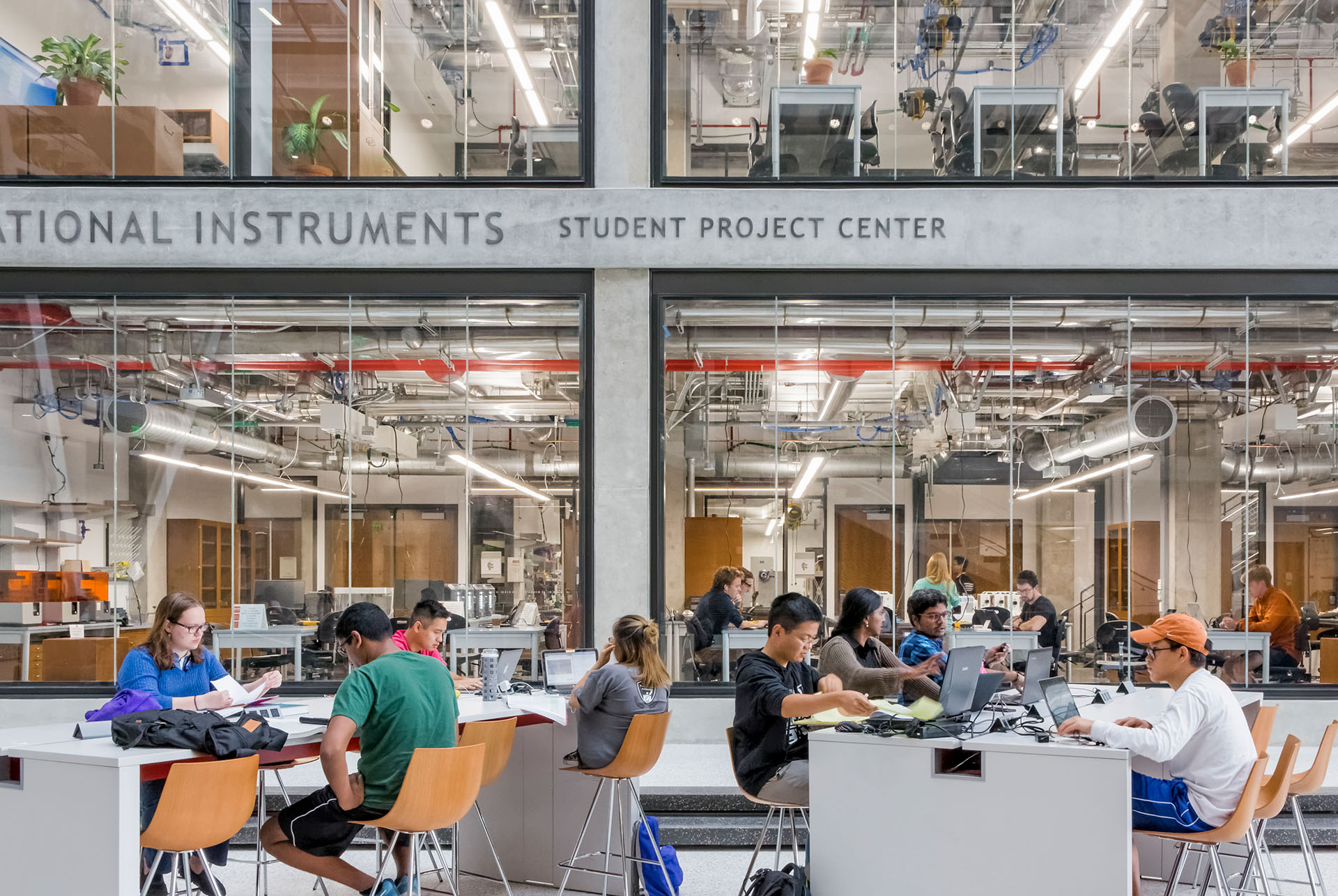
Selected Projects
The Ohio State University
Peter L. and Clara M. Scott Laboratory
Princeton University
Environmental Studies (ES) and The School of Engineering and Applied Science (SEAS)
Purdue University
Engineering Flex Lab Facility
University of Texas at Austin
Engineering Education and Research Center
University of Oregon
Knight Campus for Accelerating Scientific Impact
University of Texas at Austin
Gary L. Thomas Energy Engineering Building
Teaching Labs
Our teaching laboratories support hands-on training across a wide array of disciplines. They reinforce community, inspire curiosity and expose students to diverse learning experiences within each of their unique campus contexts . They aspire to create a more equitable future through their humanistic approach to space, materiality and transparency.
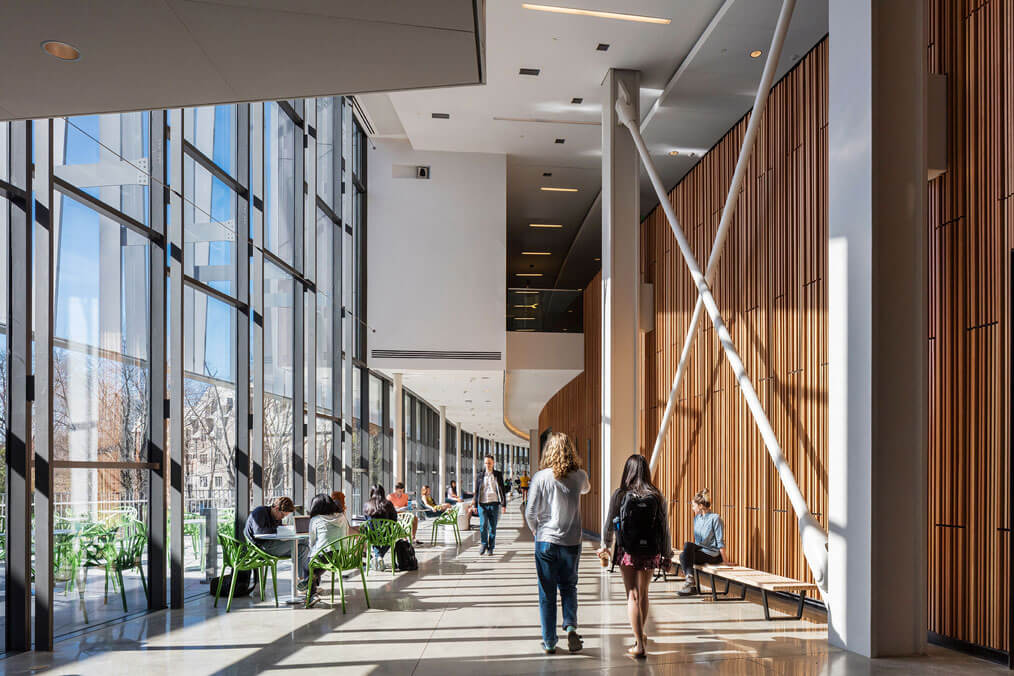
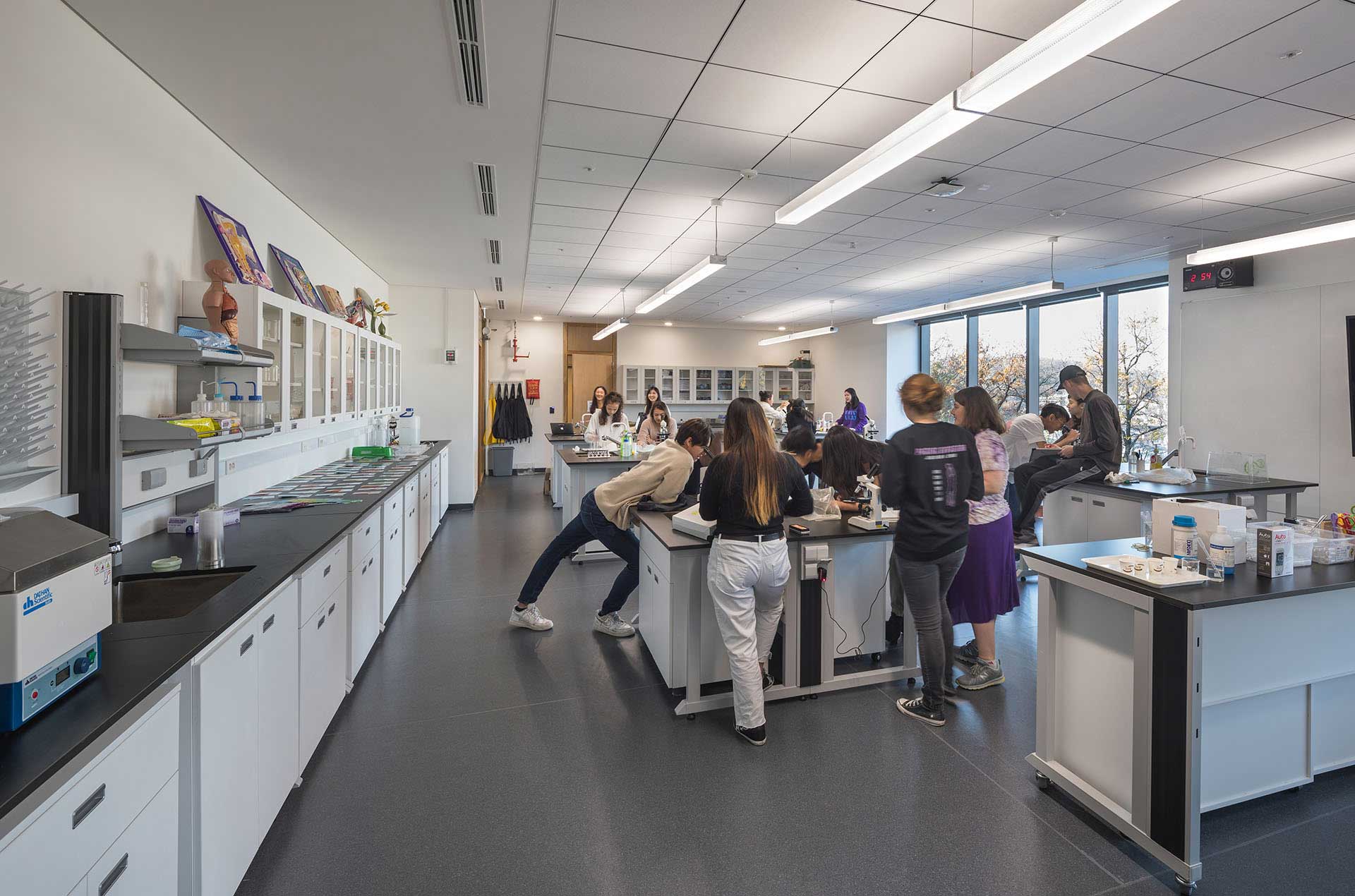
Selected Projects
Cornell University Weill Cornell Medicine
Belfer Research Building
Kuwait University
Health Sciences Campus
The Ohio State University
Biomedical and Materials Engineering
Princeton University
Environmental Studies (ES) and The School of Engineering and Applied Science (SEAS)
Purdue University
Dudley and Lambertus Hall
University of Texas at Austin
Gary L. Thomas Energy Engineering Building
Purdue University
Chaney-Hale Hall of Science
University of Oregon
Phil and Penny Knight Campus for Accelerating Scientific Impact
State University of New York at Cobleskill
Center for Agricultural Science and Technology Center
State University of New York
Downstate Health Science Center
Stanford University
Bass Biology Building
NYU Langone Health
Science Building and School of Medicine
University of Texas at Austin
Engineering Education and Research Center
Vassar College
Bridge for Laboratory Sciences Integrated Science Commons
Commercial Labs
Our commercial life science laboratories are designed for optimal flexibility to create development opportunities for life-science start ups, independent researchers, or established commercial laboratories. Mixed-use programs, where desired, engage local communities and businesses to create a 24-7 “live-work-play” environment.
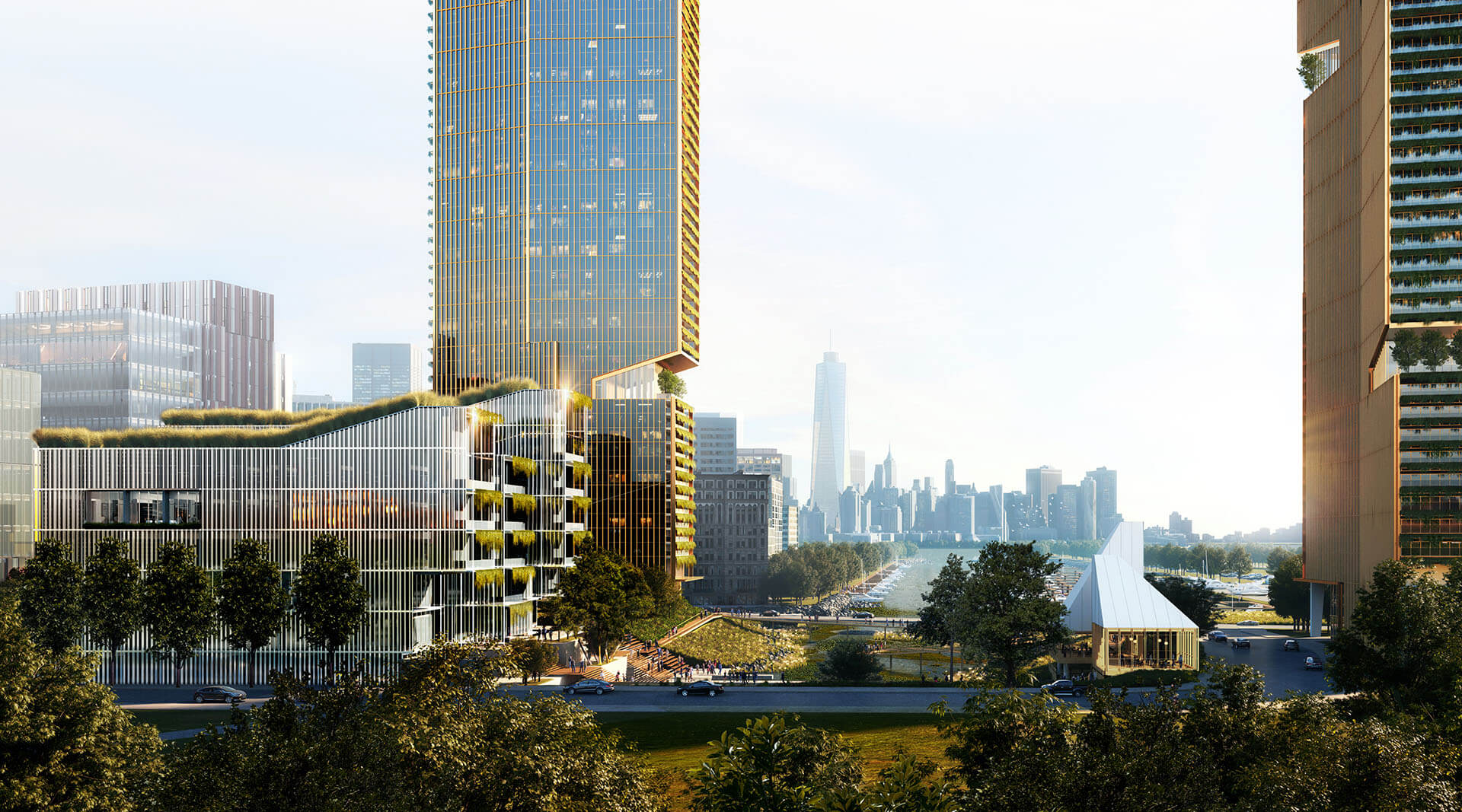
Selected Projects
Applied Life Sciences Hub
New York Blood Center
New York Stem Cell Foundation
Research Institute Laboratory
Huawei Wuhan Research and Development Campus
Wuhan, China
Cape Horn Sub-Antarctic Center
High Rise / Vertical
Our High-Rise Laboratories respond to their constrained urban sites. Strategically integrating diverse research groups across multiple floors enhances collaboration among groups, and distinct civic spaces and street-level connectivity create a vibrant research community.
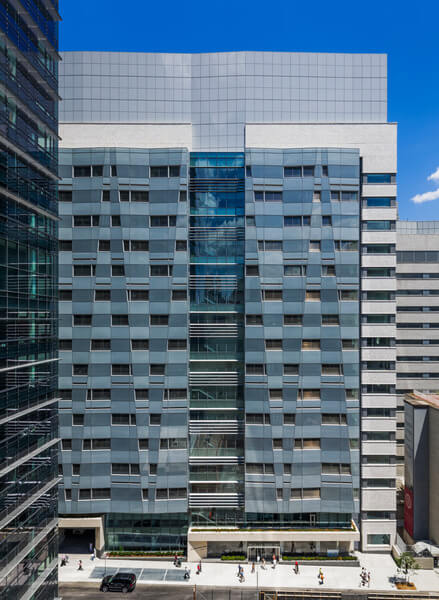
Selected Projects
Cornell University Weill Cornell Medicine
Belfer Research Building
Memorial Sloan-Kettering
The David H. Koch Center for Cancer Care and Center and City University of New York, Hunter College, Science and Health Professions Building
NYU Langone Health
Science Building and School of Medicine
Ennead’s Lab Center Leadership
The Lab Center engages in a wide variety of issues, such as tracking current and best practice laboratory design trends, attending and speaking at national laboratory design conferences, researching lab building typology history, and attending laboratory facility tours and lectures. The Center also compiles benchmark data on our laboratory projects as well as available metrics of other major national institutions. Sustainability is also a high priority in our design of research buildings. Acknowledging that laboratories are notorious for high energy consumption, the Lab Center offers the critical knowledge on how to optimize passive architectural and active mechanical strategies to reduce energy consumption and achieve high performance, flexible, and resilient buildings for science and research. Regularly sharing these strategies and emerging trends with the offices allows us to better inform designers for current and future work as well as illustrate a range of design solutions and innovations.

Emily Kirkland
Principal
Lab Practice Leader

Jarrett Pelletier
Principal
Lab Practice Leader

Lois Mate
Associate Principal
Lab Practice Leader
Thought Leadership
A Principal at Ennead, Emily Kirkland has extensive design management experience serving as the project manager on a number of diverse projects. Emily brings extensive expertise in the design and management of research facilities and currently serves as the Project Manager for Ennead’s Princeton University ES & SEAS project. Emily is also the co-leader of Ennead’s Laboratory Center of Excellence, which tracks current and best practice laboratory design trends and compiles benchmark data on our laboratory projects and available metrics of other major national institutions.
Laboratory Experience
The University of Texas at Austin, Cockrell School of Engineering, Gary L. Thomas Energy Engineering Building
Purdue University, Chaney-Hale Hall of Science
Purdue University, Flex Lab Facility
Purdue University, Engineering and Polytechnic Gateway Complex (Dudley-Labertus Hall)
The University of Texas at Austin, Cockrell School of Engineering, Engineering Education and Research Center (EERC)
Princeton University, Environmental Studies (ES) and The School of Engineering Applied Science (SEAS)
Lois Mate, an Associate Principal at Ennead Architects, has applied her vast knowledge of academic, laboratory, and healthcare projects to the planning and programming efforts upon which their success depends. She brings specific experience in programming and planning academic laboratories with undefined user groups, multiple stakeholders, complex programmatic requirements, and site constraints. Lois is also co-chair of the AIANY Science and Research Facilities Committee and co-leader of Ennead’s Laboratory Center of Excellence, focusing on metrics, trends, and innovation in both institutional and private sector research building and master planning projects. Lois is also responsible for helping to develop Ennead’s Lab Cost Drivers Study which the firm undertook to better inform our design process in this typology and maximize cost savings for our clients.
Laboratory Experience
Jefferson Health Specialty Care Pavilion, Philadelphia, PA
University of Oregon, Knight Campus for Accelerating Scientific Impact, Eugene, OR
Massachusetts Institute of Technology, Schwartzmann College of Computing, Boston, MA
UC Santa Cruz (UCSC) Thimann Laboratories Interdisciplinary Instruction and Research Building (IIRB), Santa Cruz, CA
New York University Langone Health, Science Building, New York, NY
New York University, Renovations to Chemical Biology Buildings (NYU Chem Bio), New York, NY
New York Stem Cell Foundation (NYSCF), Research Institute Laboratory, New York, NY
Weill Cornell Medicine, Belfer Research Building, New York, NY
New York University Langone Health at Trinity Center, New York, NY
Weill Cornell Medicine, Weill Greenberg Center, New York, NY
University of Michigan, A. Alfred Taubman Biomedical Science Research Building, Ann Arbor, MI
NYU Langone Health, Skirball Institute for Biomolecular Medicine and Residence Tower, New York, NY
Ohio State University, Biomedical and Materials Engineering Complex Phase 2 (BMEC) Columbus, OH

Richard Olcott is a Design Partner at Ennead Architects where over the last four decades he has developed an award-winning body of work for leading educational, cultural, and civic institutions. His work is grounded in the power of architecture as an interpretive medium, one that can communicate the complexities of contemporary society and create a lasting cultural impact. Richard is interested in how architecture can reinvent itself within the existing urban condition through absorption, addition, and transformation. He creates buildings that are at once expressive of their missions and rooted in their uniquely specific contexts. His work has received numerous awards for design excellence, including National AIA Honor Awards, New York State AIA Awards, New York City AIA Awards, and American Architecture Awards from the Chicago Athenaeum, as well as local and regional awards.
Laboratory Experience
Princeton University, Environmental Studies (ES) and The School of Engineering Applied Science (SEAS), Princeton, NJ,
University of North Texas, Cape Horn International Research Park, Puerto Williams, Chile,
Stanford ChEM-H and SNI Building (Chemistry, Engineering & Medicine for Human Health and the Neuroscience Institute), Stanford, CA,
Stanford University, Bass Biology Buildiobriantng, Stanford, CA,
Vassar College, Integrated Science Center, Poughkeepsie, NY,
To see Richard Olcott’s full bio click here.
Jarrett Pelletier is a Principal at Ennead Architects. He brings a diverse portfolio that includes award-winning projects in higher education, research laboratories, and healthcare. Regardless of project type, Jarrett believes that architecture must reach beyond aesthetics by creating spaces that enhance human interaction, builds communities, and embody wellness and sustainable thinking. As Project Designer on University of Oregon KCASI Phase 1, he oversaw the design work of both the internal team and consultants ensuring the project was consistent with the overall architectural intent. Jarrett also developed design concepts through to detailed designs, including providing support in the production during CA’s and CD’s. His other significant projects included the University of Michigan Biological Sciences Building Weill Cornell Medicine, Belfer Research Building and Olin Hall New Clinical and Research Building, 1101 Chest Ambulatory Care Center, Applied Life Sciences Hub in New York City, and Kuwait University, Health Sciences Campus.

